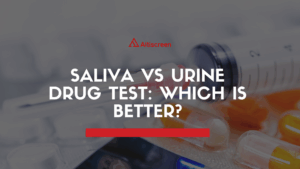Non-NIDA Drug Screen: What It Means and Why It Matters
Drug testing has become a standard practice in workplaces around the world, especially in safety-sensitive industries. Many people are familiar with the basic NIDA 5-panel drug screen, which tests for five common substances. But what about situations where an employer wants to screen for a broader range of drugs? This is where the concept of a “Non-NIDA” drug screen comes into play. In this expert guide, we will explain what a non-NIDA drug screen is, how it differs from the standard NIDA test, and why it matters for employers and employees alike. We’ll also cover when these expanded panels are used and what considerations come with them, ensuring you have a complete understanding of this important topic.
Short Answer
A Non-NIDA drug screen is a drug test that goes beyond the standard 5-panel set by the U.S. National Institute on Drug Abuse (NIDA). While the NIDA panel includes only five drug categories—THC, cocaine, amphetamines, opiates, and PCP—a Non-NIDA test can include additional substances like benzodiazepines, barbiturates, methadone, and more. These expanded panels are commonly used by employers who want a broader, more customized approach to drug testing, particularly in safety-sensitive roles or industries with evolving substance abuse risks. Non-NIDA tests are flexible, non-regulated, and can be tailored to the unique needs of a company or organization.
Understanding NIDA and Standard 5-Panel Drug Screens
To understand what a “non-NIDA” drug screen is, it’s important to first look at the NIDA panel. NIDA refers to the National Institute on Drug Abuse, a U.S. federal agency that helped define early workplace drug testing standards in the 1980s. The term NIDA-5 refers to the original five-panel test designed to detect the most commonly abused substances at the time. This panel includes marijuana (THC), cocaine, amphetamines (including methamphetamine), opiates (like heroin or morphine), and PCP.
This 5-panel test quickly became the foundation for drug screening in many federal and regulated industries, particularly in the United States. Roles in transportation, such as commercial drivers or airline pilots, are still subject to mandatory NIDA 5 testing under Department of Transportation (DOT) regulations. These tests are performed under strict protocols, usually using urine samples, and are considered the benchmark for “regulated” drug testing programs.
However, the scope of the NIDA 5 is limited. It doesn’t cover many prescription medications or emerging synthetic drugs that may also pose risks in the workplace. To address this, many employers have moved toward expanded drug panels, often called Non-NIDA drug screens. These tests include the original five substances, but also screen for additional drugs based on the needs of the employer or industry.
What Is a Non-NIDA Drug Screen?
A Non-NIDA drug screen refers to any drug test that includes more substances than the standard NIDA 5-panel. It still screens for marijuana, cocaine, amphetamines, opiates, and PCP, but adds other drugs based on the needs of the employer or testing provider.
Common expanded panels include the 7-panel, which adds benzodiazepines and barbiturates, and the 10-panel, which further includes methadone, propoxyphene, and methaqualone. These additions help detect the misuse of sedatives, synthetic opioids, and other prescription drugs often missed by the standard test.
Some workplaces go further, using 12-panel or custom tests to detect substances like MDMA, oxycodone, LSD, or synthetic cannabinoids. There’s no single standard—Non-NIDA panels are flexible and tailored to specific risks or industries.
NIDA vs. Non-NIDA: Key Differences
The main difference between a NIDA and a Non-NIDA drug screen lies in the range of substances tested. While the NIDA panel focuses strictly on five federally mandated drug categories, a Non-NIDA screen includes those five plus additional substances, offering a more comprehensive look at potential drug use.
Regulatory Framework
NIDA-based testing is tightly regulated, particularly in the U.S. under Department of Transportation (DOT) rules. These tests follow strict federal guidelines, making them mandatory for safety-sensitive roles such as commercial drivers and pilots. In contrast, Non-NIDA drug screens fall outside of these federal mandates. They are used in non-regulated industries and are shaped by an employer’s internal policies rather than government rules. This gives organizations more freedom to choose which drugs to test for and how to conduct those tests.
Use in the Workplace
NIDA tests are commonly used in federal jobs or industries where public safety is a concern. Non-NIDA screens are typically adopted by private employers who want broader testing—whether to cover prescription sedatives, synthetic opioids, or other substances not included in the federal panel. Hospitals, tech firms, construction companies, and schools often choose expanded panels to reflect the specific risks of their work environment.
Flexibility in Testing Methods
Unlike NIDA-regulated tests, which usually require urine samples and follow a uniform protocol, Non-NIDA testing allows more flexibility. Employers can use urine, hair, saliva, or even blood testing depending on their goals. For example, a company concerned with long-term drug use might use hair testing, which can detect substances taken months earlier. Non-NIDA screens can also be customized in terms of panel size—ranging from 6 to 12 drugs or more—based on relevance to the job or industry.
Broader Detection Capabilities
Because Non-NIDA tests go beyond the standard five substances, they can identify drug use that a NIDA test would miss. For instance, someone misusing benzodiazepines like Xanax might pass a NIDA 5 test but would be flagged in a 10-panel Non-NIDA screen. This expanded scope is especially valuable in roles where subtle forms of impairment—like from sleep aids or anxiety medications—could compromise safety or performance.
No Universal Standard
It’s important to understand that Non-NIDA is not a specific test, but a general category. Different testing providers may include slightly different substances, even under the same “10-panel” label. Some may add synthetic cannabinoids, others might focus on prescription opioids. Because of this variation, both employers and employees should be clear on what each test includes. Defining the panel clearly and working with a reliable testing provider helps ensure both accuracy and fairness.
When and Why Are Non-NIDA Drug Screens Used?
Non-NIDA drug screens are typically chosen when an employer wants a broader view of potential substance use beyond the federally mandated minimum. They offer a practical solution for identifying misuse of both illicit and prescription drugs that could pose safety or performance risks in the workplace.
One of the primary reasons for using expanded panels is safety. In high-risk environments—like construction sites, hospitals, or transport—any form of impairment can lead to serious accidents. While NIDA panels detect common illicit substances, they don’t screen for many prescription medications that may be legally obtained but misused. Drugs such as oxycodone, hydrocodone, or benzodiazepines can significantly impair cognitive or motor functions if used without medical supervision. Non-NIDA panels help employers spot this kind of misuse before it leads to harm.
Expanded testing also serves as a deterrent. Employees are less likely to take prohibited or unprescribed substances if they know their employer is testing for more than just street drugs. This proactive approach supports a healthier, more productive workplace by closing the gaps that standard testing leaves open.
In certain sectors—particularly healthcare, education, or transportation—maintaining public trust is just as important as internal safety. A broader testing policy reinforces a company’s commitment to responsibility and reliability. When staff members handle vulnerable populations or critical tasks, drug screening isn’t just a legal checkbox—it becomes a reflection of professional standards.
Non-NIDA tests also allow companies to respond quickly to evolving drug trends. Unlike federally regulated panels that change slowly, employers can modify their testing panels as new substances become common in their regions or industries. Whether it’s adding fentanyl detection in areas hit by opioid abuse or including MDMA in nightlife settings, this adaptability makes Non-NIDA panels especially valuable in today’s changing landscape.
Finally, these expanded tests are often used after incidents or when impairment is suspected. In cases involving workplace accidents or visible behavioral changes, a Non-NIDA screen provides a more thorough investigation. It ensures that any substance—whether common or obscure—that may have contributed to the issue is not overlooked.
Conclusion
Non-NIDA drug screens represent a flexible, targeted approach to workplace safety and compliance. While the traditional NIDA 5-panel remains a cornerstone for regulated industries, it does not reflect the full range of substances that can impair judgment or performance in modern work environments. Non-NIDA panels close that gap by allowing employers to test for a broader spectrum of drugs—including prescription medications, synthetics, and emerging substances—tailored to the specific risks of their industry.
This adaptability makes Non-NIDA testing especially valuable in settings where safety, liability, and public trust are on the line. Whether used routinely or in specific situations like post-accident investigations, these expanded panels give organizations greater confidence in their drug-free workplace efforts. For employers, it’s an opportunity to strengthen internal policies. For employees, it brings clarity and accountability. As workplace demands evolve, so too must the tools we use to keep them safe—and Non-NIDA drug screens are a key part of that evolution.





